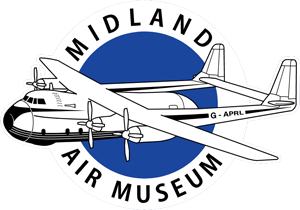Wings over Coventry
Local aviation history is strongly featured in the Wings Over Coventry gallery on the mezzanine floor of the main hangar, showcasing products from local manufacturers, particularly Armstrong-Whitworth who had a factory adjacent to the airfield’s southern boundary from 1936 onwards; Armstrong-Siddeley (and successors Bristol-Siddeley and Rolls-Royce) who produced aero engines at their sites at Parkside, Quinton Road and Ansty from 1920 onwards; Humber who built both aeroplanes and aero engines at their Stoke site; Alvis who built aero engines in Holyhead Road and tested them at Baginton and, of course, Dunlop, makers of aircraft wheels, tyres, brakes and other systems at their sites in Hillfields and Holbrooks and later at Fort Dunlop in Birmingham.
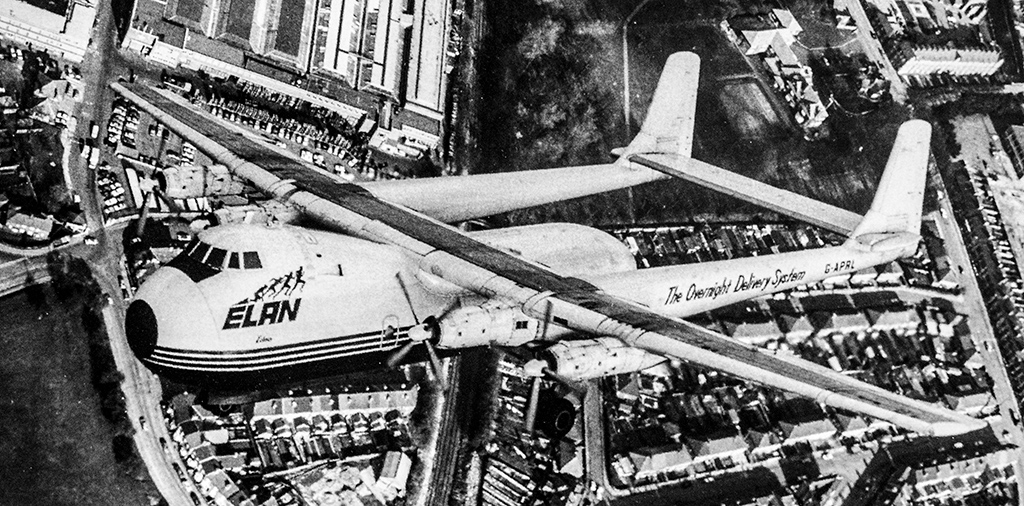
The Wings over Coventry exhibition includes engines, wind tunnel models, aircraft components and various other items; the Museum’s aircraft exhibits also include many types built locally. Most obvious is the huge Armstrong-Whitworth Argosy which dominates the external display area and is our largest airframe; AWA also built many Meteors, Sea Hawks, Javelins and Hunters, and we have an example of each on display.
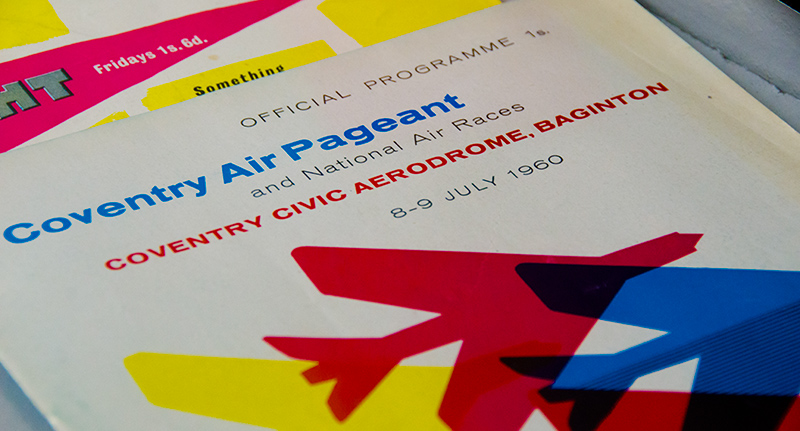
The local flavour is carried over into many of our other aircraft, such as the de Havilland Vampire F.1 of 605 (County of Warwick) Squadron (the only Mk.1 Vampire left in the UK and one of only two in the world). While not built or flown at Baginton, the Squadron operated their Vampires from nearby RAF Honiley, 8 miles to the west of Baginton.

It’s not all military hardware either – with airports both here at Baginton and slightly further afield at Birmingham, there have always been more civilian wings over the area than military. Our collection includes a Humber Monoplane replica (the first aircraft type built in Coventry back in 1910), a Flying Flea (in which many pre-WWII amateur aircraft builders experienced their first taste of the perils of aviation), a de Havilland Dove (a regular sight at Baginton in the 1960s) and a Vickers Viscount airliner (also a regular at Baginton in the 1960s and 1970s).
World War II & RAF Baginton
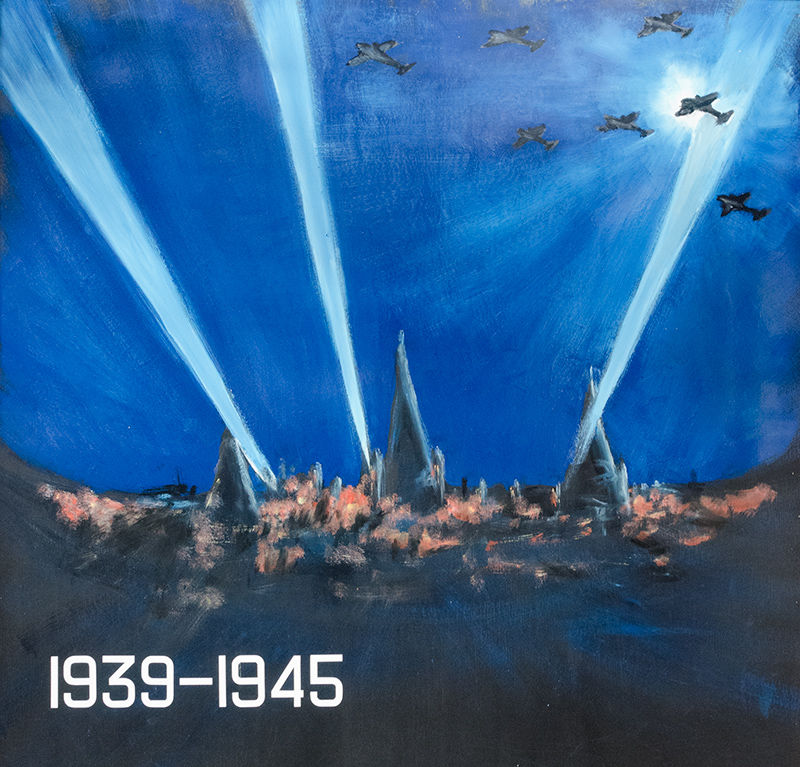
The Museum is situated on the boundary of Coventry Airport. The airfield was opened in 1936 and Armstrong-Whitworth aircraft manufacturers built a factory on the site shortly afterwards, with Whitley bombers being one of the types in production at the site as WWII broke out. The airport was soon pressed into use as a fighter station by the RAF, becoming RAF Baginton for the duration of the war. It was used principally by 308 (Krakow) Squadron from 1940 to 1941, flying Hurricanes and later Spitfires in defence of the city of Coventry. Several Polish airmen killed during the Coventry Blitz are buried in nearby Baginton Cemetery.
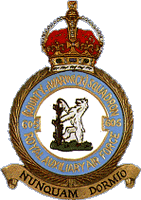
605 (County of Warwickshire) Squadron of the Royal Auxiliary Air Force were also based here with Hurricanes in 1940. As the Luftwaffe became less able to penetrate as far as Coventry on bombing raids, Baginton became less used as a frontline fighter station and more as a staging area for squadrons re-equipping or being rested from action further south.
As a result, several fighter squadrons had brief postings to Baginton, including 79 (Madras Presidency) Squadron with Hurricanes in 1941–1942, 403 (Canadian) Squadron with Tomahawks in 1941 and 616 (South Yorkshire) Squadron with Spitfires in 1942. Preparations for D-Day later in the war also found Baginton in use for trials of jettisonable fuel tanks for fighter aircraft to extend their range, and Horsa glider towing trials using the Whitleys that were such a common sight here. After D-Day, the airfield was often used for the repair and servicing of aircraft.
In recognition of the local area’s contribution to the war effort we have a number of WWII related exhibits within the Wings over Coventry exhibition including a rare Bristol Beaufighter cockpit section (built locally) and a rear fuselage section from one of the more than 1,800 Armstrong-Whitworth Whitley bombers built here at Baginton. Unfortunately, no complete Whitley airframe has survived.
The Story of The Jet
With one of the City of Coventry’s most famous sons – Sir Frank Whittle – being regarded as the Father of the Jet Age, it is no coincidence that the Museum’s strongest theme is the development of the jet and jet-powered aircraft. Two of our most notable exhibits following this theme are our Gloster Meteor F.4 and Boulton-Paul P.111A, the latter built in Wolverhampton to a 1946 specification to investigate the use of a delta wing planform.
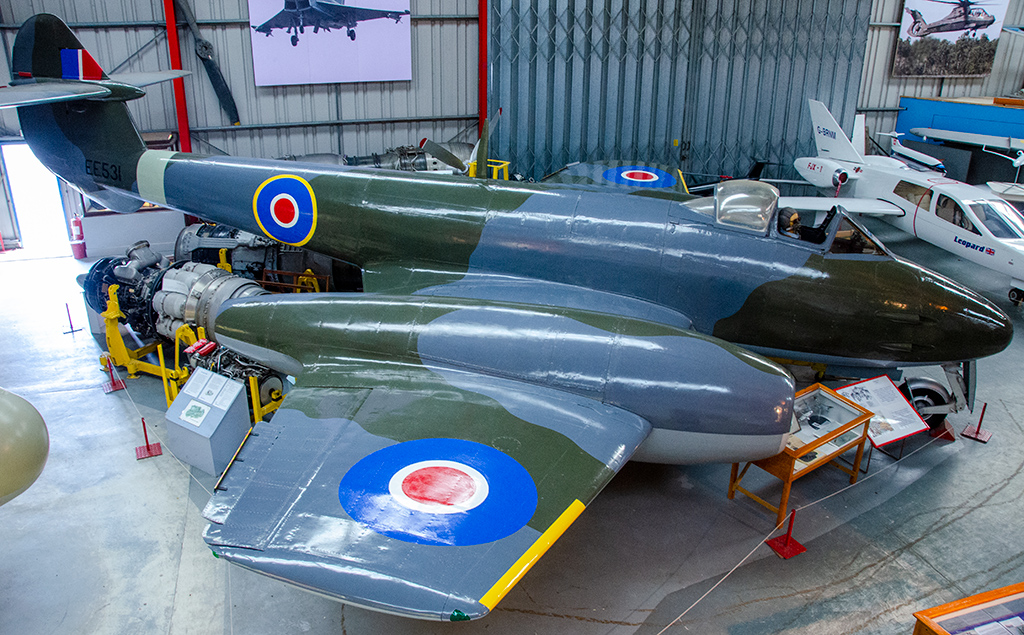
The story of the jet is an international one and our range of jet aircraft exhibits reflect that, ranging from the now rare Swedish SAAB J29 Tunnan (the first post-war European swept-wing jet fighter (and the only one in the UK); the Dassault Mystère IVA (the first French swept-wing fighter); the English Electric Lightning, (the only all-British Mach 2 fighter) right through to the mighty American McDonnell-Douglas F-4C Phantom II (our example being a genuine MiG-killer with combat history over Vietnam).
The incredible variety of designs produced by the British aircraft industry in the 1950s and 1960s is represented by an equally wide range of aircraft here at the Museum – from carrier-borne types such as the Hawker Sea Hawk, de Havilland Sea Vixen, Fairey Gannet and Sea Harrier to RAF fighters such as the aforementioned Vampire, Meteor, Hunter, Javelin and Lightning. The jet bomber force is represented too, most notably by the English Electric Canberra (though ours is a rare reconnaissance version) and the huge Avro Vulcan 4-engined nuclear bomber. We also have several military trainers including the American Lockheed T-33, the Polish PZL Iskra and the British Vampire T.11.
Rotors over Coventry
Helicopters are not neglected here at the Museum, with both military and civil examples of the Westland Whirlwind (common visitors Baginton in the 1960s and 1970s) and an American HH-43 Huskie (or “Pedro” as it was known to the crews, used for rescue and fire fighting duties at various US bases in the UK during the 1960s and early 1970s, such as RAF Upper Heyford where our example came from).
We also have two extremely rare helicopter ‘dead ends’ – the WWII German Flettner Fl282 Kolibri (Humming Bird – an observation/artillery spotting helicopter that had two intermeshing rotors) and the British Fairey Ultralight of the late 1950s. Unusually, the Ultralight’s rotor was powered by tip jets rather than turboshaft drive, with high pressure air mixing with fuel to be burned in small pods at the ends of the rotor blades. An adapted Palouste turbojet engine located at the bottom of the fuselage pod provided compressed air for the tip jets.
Access to Aircraft Exhibits
A number of our aircraft on display both within the main hangar and in the external display area have steps up to the cockpit so that you can view the cockpit area or get a higher viewpoint to take pictures of nearby aircraft from. Many of the exhibits’ cockpits are also opened up when the weather and staffing levels permit – if you have any particular requests, please ask!

With most of our aircraft exhibits being of military origin, needless to say there was never any thought put into ease of access to the cockpit for anybody other than a fit young man! Many cockpits are high off the ground, reachable only with special ladders and with various impediments to easy access such as refuelling probes and heavily framed cockpit canopies. This does mean that access to many of the exhibits is difficult and while we will endeavour to assist those with limited mobility, it must be appreciated that some exhibits will remain inaccessible to some of our visitors either for reasons of safety or in the interest of avoiding damage to the exhibits themselves.
We do have a film showing the interior of the Vulcan and Argosy for those visitors unable to access the aircraft; please ask at reception, and we will be only too happy to put it on for you. With many of our exhibits being on external display, it should also be appreciated that weather conditions may preclude opening particular aircraft up, particularly during the winter.
Open Cockpit Days
We hold a number of Open Cockpit Days throughout the year and on these days we open up more than the usual number of exhibits, and there are even opportunities to sit in some of the aircraft. There are very few places where you can sit in the pilot’s seat of types like the Gloster Meteor, Hawker Hunter, English Electric Canberra and BAe Harrier – the Midland Air Museum is one of them.
A particular visitor favourite is our Vulcan, XL360 ‘City of Coventry’, so much so that the Vulcan is opened up to visitors on most days with no need to wait for an Open Cockpit Day. The tight confines of this mighty V-bomber’s cockpit are a surprise to most visitors! Unfortunately the only access is via a steep ladder and there are a number of hazards for the unwary head within the cockpit, so access to the Vulcan cockpit – as with all our cockpits – is strictly supervised, with knowledgeable and friendly guides on hand to explain the crew’s tasks and what the various items of equipment are for.
Cockpit visits are always free – there is no additional charge to pay. Of course, we won’t say no if you want to donate a little something towards the upkeep of our exhibits.
